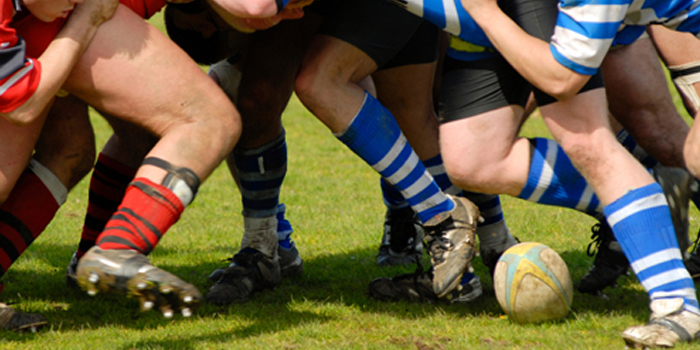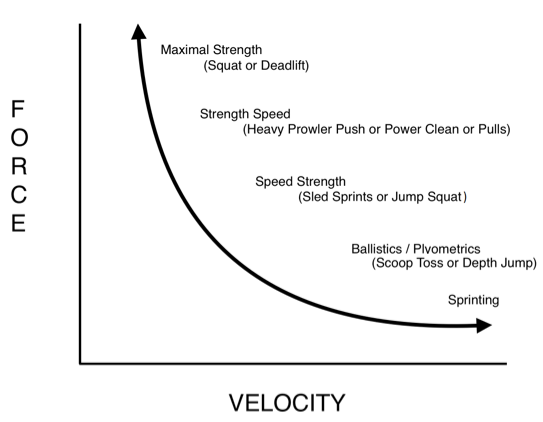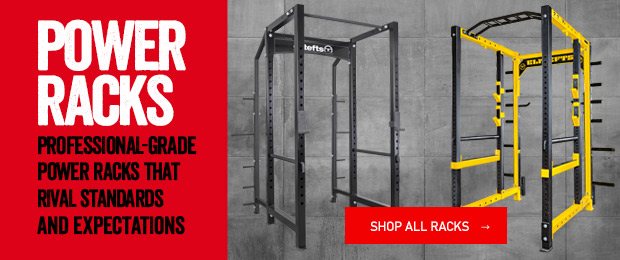
Since I first began lifting weights at the age of 15 at the American Health Spa in Brookvale, a northern beaches suburb of Sydney, Australia, I have tried programs by and been influenced by many people. Trial and error over time has led me to where my programming is today. The list of people who I have listened to and learned from along the way is a complete Iron Education. Some you will know, but others will be just names to you. Each person on the list has given me something to use in my programming.
RECENT: To Split or Not to Split: The Athlete-Training Question
From my starting point, men with no known surname: Dennis, Pat and Tony, Vince Basile the owner of the Brookvale gym, all the writers in the original Iron Man magazine published by the Raders, Peary and Mabel of Alliance, Nebraska, Arthur Jones of Nautilus, to the strength and conditioning coaches of the University of Nebraska, led by Boyd Epley, to the legends Ian King, Charles Poliquin, Dan Baker, Vern Gambetta, Louie Simmons, Dave Tate and the Academicians Doctors O’Shea, Garhammer, Stone, Kraemer and Siff onto the current crop of thinkers Thibadeau, Waterbury, Contreras. Each of these men and institutions have added, introduced, developed, or reinforced my philosophy of training.
Certain principle have become, over time, etched in the proverbial tablets of stone. These are:
- Heavy and basic movements build quality size and strength.
- Size is a by-product of strength.
- Strength is the basis of all other bio motor qualities.
- Change something periodically but do not change too much, especially if it is working for you.
- The ability to train is governed by the ability to recover, so less is often more.
- Use a variety of angles, bars, loading patterns, and equipment variations to sort out what best works for you and what transfers to your sport.
Using these concepts, here is an upper body workout with an example exercise selection:
Vertical Push and Pull Wave Loading 2x(6/5/4) or Rule of 24 (6x4)
- Steel Log Shoulder Press (superset with) Trap Bar Shrugs
45-Degree Angled Push and Pull Straight Sets 5x5 or Rule of 24
- Football Bar Wide Angle Grip (superset with) Yates Row
Horizontal Push and Pull Cluster Sets 4x3/3 or Rule of 24 (4x6)
- Close Grip Football Bar Bench Press (superset with) Pendlay Row
Shoulder Health Variety of Sets and Reps
- Rope Grip Cable Face Pulls (superset with) Dumbbell Y Raises
Callisthenic-Based Compound Movements for Arms Rule of 24, 3x8
- Chins (superset with) Dips
Isolation Biceps and Triceps Rule of 24, 2x12
- DB Tate Presses (superset with) DB Twist Curls
When it comes to training the lower body, my programming is completely different to that above. It is linked in with the force velocity curve and will take into consideration elements of programming considering:
- Ballistics and Plyometrics
- Strength Speed and Speed Strength
- Maximal Force
- Assistance Exercises for Glutes and Hamstrings
An excellent publication to get an insight into programming for power, which I would highly recommend, is Training Principles for Power co-authored by Gregory Haff and Sophia Nimphius and published in the NSCA Journal, Volume 34, Number 6, December 2012.
As I mentioned, I align exercises and movements with the force velocity curve, moving from movements which are characterized by low force and high velocity through to movements which are high force and low velocity. Also, lately with the influence of excellent strength and conditioning coaches, Nick Lumley, Jack Walsh and Marc Keys, I have started to program with 10–20 meter acceleration sprints in the lower body program, working under the premise of activation and potentiation, as I have previously programmed using the speed power combo.
While I am an advocate of working the entire curve in each training session, this is modulated by available training time and also recovery of the individual. I will also take into consideration the strength levels of the individual and program at either end of the curve based around whether the individual is already quite strong and needs to learn how to express with strength level. So, training sessions in the velocity end of the curve. The alternative is an individual who has a young training age or who is not yet very strong and needs to have a program that develops and produces force, which means training in the force end of the curve.
LISTEN: Ashley Jones — Incorporating Games in a Pre-Season Program
The other consideration is during a season if you have the luxury of two lower body sessions, then I would program the force end of the curve early in the training week and the velocity end of the curve later on in the training week. Once again, this is if time and recovery allow.
As related to the diagram of the force velocity curve below (with thanks to Murray Flemming for translating my ideas to paper), here is the program I would put into place, with an example of each exercise. This is also where the use of Velocity Based Training can be effective if you have access to the necessary equipment. You can program from velocities or from percentages of 1RM.
Speed — 10 to 20 meter accelerations with good recovery between three and five reps or when timing slows, if using electronic timing lights.
Ballistics and/or Plyometrics — Scoop toss with a medicine ball or depth jumps 3x3-5 reps.
Speed Strength — Jump squats with empty Olympic bar up to 40% of 1RM back squat 3x3–5 reps.
Break here if working on a split program as mentioned above.
Strength Speed — Power Cleans with 75%, 3x3–5 reps or Snatch Pulls with 80%, 3x3–5 reps.
Maximal Strength — Box Squat 3–5 sets x 3–5 reps with 80–90%.
Assistance Lower Body (Single Leg and Hamstrings/Glutes) — Bulgarian Sprinter’s Squat with or without a deficit option (superset with) single-leg hip thrusts 3–4 sets x 6–10 reps.
Of course, you could include some weighted core work at the conclusion of the program, a personal favorite being the combination of the zercher lift with the suitcase deadlift. 3 sets of 5 reps on each movement.
Thanks for reading and I look forward to your feedback if you decide to give this style of training a go.












Cheers again for sharing your thoughts with us. I've come across this idea before, and I think it may have been some of your writings as well as others. I made the mistake of trying to power-lift everything, and do the running required to get fit enough...no dice.
I just wanted to add to this in case anyone gets confused like I once was; the idea isn't to do 100% bodybuilding work for the upper body. The idea is like I believe above, that it's much easier to recover from and will actually protect from injury more. There is still heavy lifting, it's just not 'balls to the wall' all the time and is more well-rounded.
Anyway, cheers for your writings.
Awesome article!
Would you recommend working the whole force-velocity curve in a single session twice a week (e.g. Monday and Thursday) or do you think it's better to work the force end on one day and the velocity end on another?
Cheers
Mike
1. I am putting an emphasis on developing my posterior chain - performing 3 sessions per week which include RDL's and Single Leg Glute Bridges for 4 sets of 8 reps plus 4x3 squats.
2. I'm also using the off season to develop a good conditioning base - these sessions include various intervals of 10-60 secs work with a 1:1 work to rest ratio. I've been using various modalities such as the air dyne, spin bike, rowing as well as running.
Just wondering how you would organise a training week with these goals in mind? Are they too contradictory (adding muscle to to my lower body while performing conditioning work?) What guidelines would you recommend / or changes ?
Look forward to hearing from you! Also enjoyed the podcast with rugby renegade!
Session 1: Deadlift & split stance RDL
Session 2: Snatch Grip Pulls from blocks & Reverse Hypers
Session 3: RDL & hip thrusts
or on a traditional 4 day loading cycle do two sessions incorporating 3 movements each session, or if you like to do full body sessions rather than split session you can still use the above three sessions as well.
For conditioning I would go out in distance early in the week doing intervals around the 10 - 30 seconds time, mid week 30 - 45 seconds and late, 45 - 60 seconds, for example:
Monday: 2 x 10 x 15 seconds work & 45 seconds recovery with 2.5 minutes between sets
Wednesday: 3 x 10 x 30 seconds work & 30 seconds recovery with 2.5 minutes between sets
Friday: 2 x 15 x 60 seconds work & 30 seconds rest with 5 minutes active recovery between sets an easy jog of say 400 metres
Whilst they are contradictory training elements you will get stronger, recovery will be a key factor nutrition & sleep, hope it helps let me know how you fare, cheers, ashley
And good luck with Edinburgh this season!
First, thank you for all your articles. You have no idea how valuable it is especially to amateur athletes who are trying to push further, without a direct access to top strength and conditioning coachs (well, with this blog we feel like we do get the access!).
My question is the following: when you advocate to train alongside the strength / speed curve at each session, does that mean you don't advise a standard way of periodizing your training year long? With bodybuilding/size phases alternating with strength / power phases, for instance.
So would that upper body workout mean 12 exercises in the session, or would you somehow dividee it, for example into 2 upper body days?
.
Cheers
I am 30 years old from England. Due to working for the NHS - rugby has taken a back step in my life, but I am still keen to train like the good old days.
I have used 3x per week Full Body splits for most of my adult life and I am interested in a change.
What would a Upper, Lower, Full Body split look like under these principles?
Regards